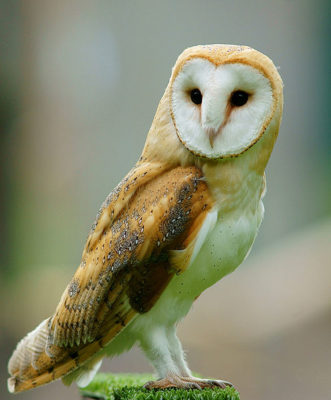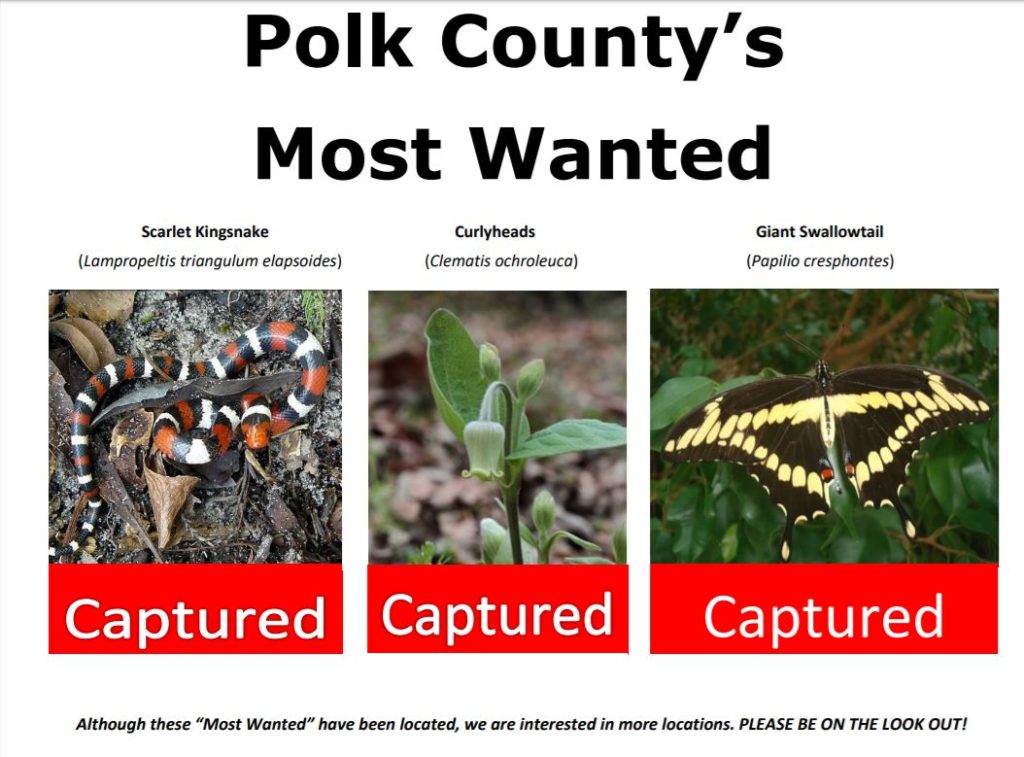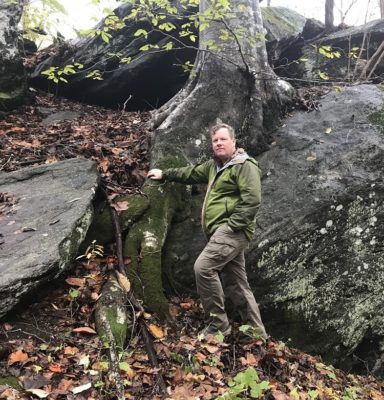In an effort to better understand the natural heritage of our region, Conserving Carolina is interested in locating rare and unusual plants, animals, and habitats that may exist in Polk County.
Help Find Us Find Rare and Unusual Species
We are asking for your help! We spotlight species of interest in the county, a “Polk County’s Most Wanted” article in the Tryon Daily Bulletin and Polk County News Journal monthly. Each article highlights one species, gives a description of the species, and asks for your help in “capturing” it—but only with photos! Please don’t disturb these rare species.
SEE THE NEWEST “MOST WANTED” CHALLENGES
We hope that this will enable the documentation of the species in the county, encourage the preservation of biodiversity, and help you get involved in searching for the unique and wonderful life found in our region.
Contact Pam Torlina, Southeast Stewardship Manager at (828) 697-5777 ext. 300 with questions, comments, or photos, or if you know where one (or more) of these species occur in the county.
Polk County’s Most Wanted Pocket Guides
To help Conserving Carolina document rare and unique plants, animals, and habitats in Polk County, we’ve created “Pocket Guides” containing all of “Polk County’s Most Wanted.” These pocket guides – the pocket guide for plants and the pocket guide for animals can be printed and taken with you in the field!
Get the pocket guide for plantsGET THE POCKET GUIDE FOR ANIMALS
Why Are There So Many Unique Plants and Animals in Polk County?

Polk County is unique. Part of the county is located within the Southern Blue Ridge Escarpment, an area where the Blue Ridge Mountains rise nearly 4,000 feet above sea level from the rolling piedmont, and it contains some of the highest natural diversity of rare plants and animals found anywhere in the world. Parts of the county are also located in a thermal belt, an area in the mountains or foothills that experiences a milder slope climate and longer growing season. There are also numerous areas with unique geology that result in a rich diversity of plants.
Because of these unique qualities, the county is anomalous in the state and there are several species that have been found here and nowhere else in North Carolina (that we know of), such as Allegheny-spurge (Pachysandra procumbens), Whorled Horsebalm (Collinsonia verticillata), and False Hellebore (Veratrum woodii). These three species are disjunct from their typical distribution in the Ozarks. There is an amazing historical record from Polk County! Largeleaf leather-root (Orbexilum macrophyllum) was found on White Oak Mountain, near Tryon Peak, in the latter part of the nineteenth century – and never seen again! Who knows what you might find out there?

Learn More About Local Biodiversity
If you want to learn more about biodiversity in our region, here are some great presentations you can watch online:
- UNCC Botanist David Campbell presents “Findings from a Two Year Study of Polk County’s Biodiversity” to the South Carolina Native Plant Society on January 16, 2018.
- Patrick McMillian, Hilliard Professor of Environmental Sustainability and Director of the South Carolina Botanical Garden presents “The Southern Blue Ridge: Crucible of Life” on July 15, 2017 at Walnut Creek Preserve.
Inventory of Significant Natural Heritage Areas Published

Conserving Carolina and botanist David Campbell published An Inventory of Significant Natural Heritage Areas of Polk County, NC. in November, 2018 after seven years of field work. The study documents an extraordinary number of rare plants and describes 32 areas that are vitally important for biodiversity, with a focus on species that are in danger of extinction. Learn more.
Previously, the last significant plant collection in Polk County was done in the 1950s and 1960s by Oliver Freeman. Freeman was the curator of living plants at the National Arboretum in Washington, D.C. and later became a resident of Tryon. During his time in the county, he collected nearly five thousand specimens. The specimens were given to the Tryon Garden Club and housed in the Pearson’s Falls Herbarium (created to house the large collection) for many years. In order to preserve Freeman’s work and the historical record of plants found in Polk County, the Tryon Garden Club decided that the specimens would be best housed at a university where they could be better accessed for scientific study. His collection was transferred to UNC Asheville’s Biology Department where it resides to this day.
The new inventory provides much needed updates to the scientific record for Polk County. Data from Polk County’s Most Wanted and other field studies will be continuously added to the database.
Related: Learn how a forest looks through botanist David Campbell’s eyes in this Stories of the Land feature, “Magical Appalachia.”








